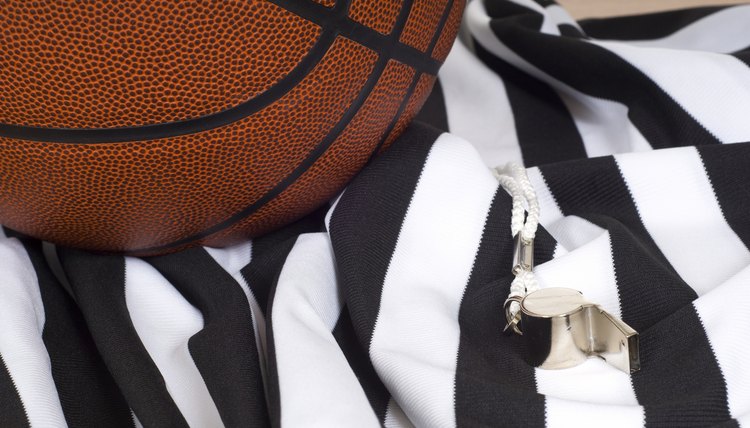Basketball Rules & Hand Signs

A basketball official’s job is not only to make judgment calls on what happens during the course of the game but also to make sure players, coaches and the scorekeepers understand what those calls are. That’s why basketball referees use hand signals to indicate certain fouls or violations. Understanding these hand signals can also help spectators understand what’s going on during the course of the game.
Violation
A violation is an infraction of the rules that results in the ball being awarded to the opposing team. The basketball official signals that a violation has occurred by blowing the whistle and holding one arm up in the air, with the palm open, followed by the sign for the specific violation.
Travel
Traveling is one of the more commonly called violations in basketball. Once a player establishes a pivot foot, he cannot lift that pivot foot and return it to the floor before releasing the ball on a pass or a shot. The official signals a travel by blowing the whistle and forming a fist with each hand, then rolling both fists around each other.
Three Seconds
Offensive players cannot stand in the lane area for more than 3 seconds while the ball is in their team’s front court. To signal a three-second violation, the referee holds out three fingers and waves his hand down by his side several times.
Personal Foul
Personal fouls involve illegal contact between players on opposite teams. To indicate a foul has occurred, the official blows the whistle and holds a fist straight up in the air toward the ceiling, followed by the specific foul signal.
Push
Pushing involves using the hands, arms or both to dislodge a player from his path or a stationary position. To indicate a push, the official makes a pushing motion outward with both hands.
Blocking
Blocking involves a defensive player using her body to move a player out of her intended path. A block is indicated by an official by placing both hands palm down on the hips.
Technical Foul
A technical foul is an infraction of the rules more serious than just a personal contact foul. A technical foul can be for unsportsmanlike conduct -- such as taunting or baiting an official or member of the other team -- or for administrative purposes like failing to supply a roster to the scorekeeper prior to the game. The referee signals a technical foul by forming a “T” with both hands perpendicular to each other.
References
- "Basketball Rules Book," National Federation of State High School Associations, 2009
- NCAA: Basketball Rules
Writer Bio
James Patterson specializes in health and wellness topics, having written and produced material for the National Institutes of Health, the President's Cancer Panel and an Inc. 500 Hall of Fame company. He is also a former sportswriter with writing experience in basketball, baseball, softball, golf and other popular sports.
